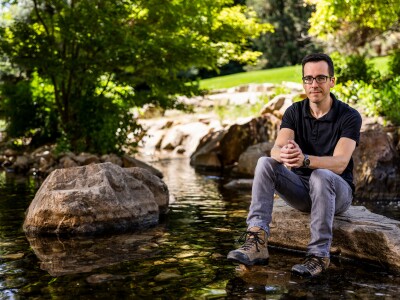Students who fork over the big bucks to attend elite private universities should consider their sacrifice a smart investment, according to a study conducted by Brigham Young University, Cornell University and RAND.
The study found that graduates of top-rated, four-year universities receive more than 30-percent higher earnings annually than graduates of less competitive universities, regardless of race, gender or socioeconomic history.
"People often wonder if it pays to attend an elite university as an undergraduate when another university costs a lot less," says Eric Eide, a BYU assistant professor of economics. "Our research shows that there is a significant gap between the wages of higher-rated private university graduates and the wages of graduates from lower-rated public universities."
Eide published the study's findings in the current issue of the Journal of Human Resources. He and his co-authors Dominic J. Brewer, an economist for RAND in the think tank's Washington, D.C., office, and Ronald G. Ehrenberg, a professor of economics at Cornell University, looked at high school graduates from the classes of 1972, 1980 and 1982. Data were provided by the U.S. Department of Education.
The researchers used Barron's Profile of American Colleges to divide the universities into three groups: most competitive or highly competitive (elite or top), very competitive or competitive (middle) and less competitive or non-competitive (bottom). Barron's categorizes colleges based on their annual acceptance rates and the average GPAs and ACT/SAT scores of entering freshmen.
The researchers compared the tuition at private institutions to the tuition at public colleges, finding that tuition was about four times higher at private schools.
Members of the class of '72 who graduated from elite universities earned a 15-percent higher hourly wage in 1986 than their counterparts who graduated from less competitive schools. The wages of 1980 and 1982 graduates were measured in 1986 and 1992 respectively. Despite having fewer years than the 1972 graduates in the work market, members of the class of '80 who received degrees from elite schools earned a 20-percent higher hourly wage than contemporaries who graduated from lower-tier schools, and 1982 graduates received 39-percent higher earnings.
"The 1972 graduates who went to top colleges have earned a moderately higher return than graduates of less competitive universities," Eide says. "But when we look at the 1980 and 1982 graduates, their earnings are significantly higher."
Brewer adds, "Even with the tuition disparity, graduates from top private schools made more money."
Although there are other factors that contribute to the increase in college costs, the co-authors concluded that the rising tuition at top private universities can at least partially be attributed to the increasingly higher wages received by their graduates.
"When it is all said and done," Eide says, "elite universities can charge more tuition because the returns are so much greater in the end."
Note: According to data collected in the mid-'80s, "Barron's" classified BYU as a very competitive university, which falls in the middle category. Currently BYU is rated by "Barron's" as a highly competitive university and falls in the elite category.
Writer: Mark Morris



